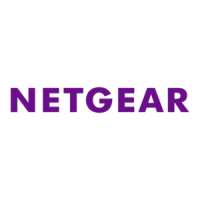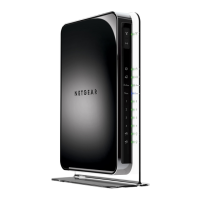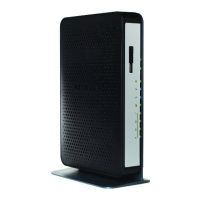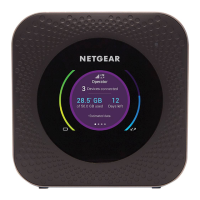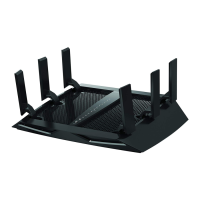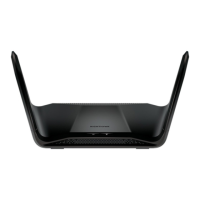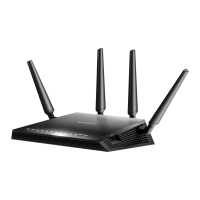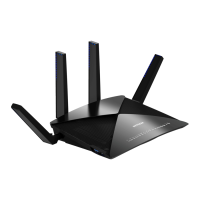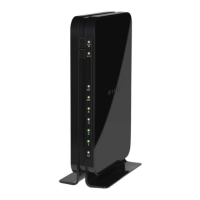
Do you have a question about the NETGEAR N150 DGN1000v3 and is the answer not in the manual?
| Wireless Speed | Up to 150 Mbps |
|---|---|
| Frequency Band | 2.4 GHz |
| Firewall | SPI firewall |
| Wireless Standard | 802.11n |
| Ports | 4 x 10/100 Mbps LAN ports |
| WAN Port | 1 x 10/100 Mbps |
| Security | WPA/WPA2 |
Details on how to unpack the modem router and its contents.
Overview of the modem router's front, back, and side panels.
Description of LEDs and buttons on the front panel.
Details of buttons and port connections on the back panel.
Information on accessing the factory reset button.
Description of the label on the bottom panel with login info.
Guidance on optimal placement for wireless performance.
Explanation of ADSL microfilters and their use.
Instructions on connecting the modem router via DSL.
Steps to prepare for modem router setup and gather ISP info.
Differentiating modem router, ISP, and wireless logins.
Guide to setting up the modem router using NETGEAR genie.
Accessing genie to view or change settings post-setup.
Steps to check for and install modem router firmware updates.
Overview of the BASIC Home screen dashboard and its sections.
Methods for connecting devices to your wireless network.
Introduction to the genie app for network management.
Configuring DSL connection settings like mode and VPI/VCI.
Viewing or changing basic ISP information for internet connection.
Steps to set up Live Parental Controls for content filtering.
Viewing or configuring wireless network name and security.
Overview of the ADVANCED Home dashboard.
Wizard to automatically detect and set up DSL/Internet.
Configuring DMZ, MTU size, and other WAN settings.
Configuring LAN IP services, DHCP, and RIP.
Adding WPS-capable devices to the network.
Configuring Quality of Service for traffic prioritization.
Setting limits for uplink bandwidth.
Blocking specific keywords or domains in HTTP traffic.
Configuring firewall rules for network access control.
Adding, editing, or disabling outbound firewall rules.
Defining custom services for firewall rules.
Setting schedules to block internet access.
Configuring email alerts for security events.
Steps to check for and install firmware updates.
Checking modem router status and usage information.
Accessing and managing system logs for events and actions.
Backing up, restoring, or erasing configuration settings.
Resetting the modem router to factory defaults.
Modifying the administrator login password.
Running ping and DNS lookup tests.
Configuring advanced wireless radio and security settings.
Creating schedules to turn the wireless signal off.
Restricting network access based on MAC addresses.
Using the router as a base station or repeater.
Exceptions for inbound traffic to servers or applications.
Forwarding specific incoming protocols to local computers.
Configuring port triggering and its time-out period.
Configuring Dynamic DNS for changing IP addresses.
Adding static routes for specific network scenarios.
Enabling remote management of the router over the internet.
Enabling UPnP for device discovery and network access.
Setting up an IPv6 internet connection.
Monitoring and managing internet traffic volume.
Setting limits on data volume usage.
Setting limits on total connection time.
General tips for troubleshooting common problems.
Interpreting LED status for troubleshooting.
Steps to resolve inability to log in to the router.
Diagnosing issues with ADSL and WAN connections.
Diagnosing PPPoE/PPPoA connection problems.
Resolving issues with loading web pages.
Resolving problems connecting to the wireless network.
Pinging the modem router from a computer.
Details of the modem router's factory default settings.
Technical details and physical characteristics of the modem router.
FCC regulations for operating the device in the US.
Warnings and instructions regarding RF interference.
